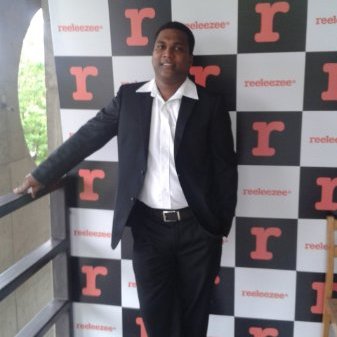Genesis of iTraveller
Shiju Radhakrishnan Co Founded iTraveller along with Nisanth Kumar, Chitra Parija, Amit Singh, Rachna Kalra & Pooja Pande. Shiju did his MBA from SP Jain Institute of Management & Research, Nisanth is a computer science engineer from Kannur University, Chitra is a graduate in Commerce, Rachna has her bachelors in mass communication, Amit Singh is an MBA from IIM-Kozhikode & Pooja has her masters in computer science engineering. iTraveller is a cloud based automated product platform for their users to discover, plan and book their holidays by selecting destinations, hotels, room types, transportation mode etc. The idea of starting up was a fire among the founding team. Identifying travel as an industry was based on realising the large potential market opportunity which is 95% offline, disorganised and fragmented. The team also realized that the founding team had some capabilities in automation, IT and process based on their ERP and their supply chain experiences, whereas the industry was hardly automated with millions of manpower involved on various facets of operations.
The Market Problems and the Opportunities
The idea actually stems out of the pain point of the market that an user cannot plan and book a trip without talking to a few travel agents for 3 or 4 days. At the end of all of this, the end users also do not get the right kind of price. They thought of empowering the users to be able to plan & book online in a fast and efficient manner and get the best price for their travel.They also found that the travel market opportunity was huge and was untapped. The market is dis-organized when it comes to holiday planning which made sense for them to do some technology enablement.
On Customer Validation
The original concept of iTraveller enabling users to come online and discover continues even now without any change. Shiju recollects that even though the destination continues to be the same, the path has changed 100% and has taken a complete U-Turn. They started in a pre-matured way without realizing the operational headache and realities. They ended up being a tour operator in solving the problem but realized that they hit the end of the universe and figured out that this business will not scale up and did a pivot.
The Platform
They had to do a lot of technology backend in content aggregation as that was iTraveller’s DNA. They decided that the content should be their focus as that solves a problem for their customers. Hence they did not focus on building their website in a flashy way. They kept their UI simple and easy for users. Shiju quotes examples of an iPhone UI or an AirBnB website where the UI is more of a solution to a pain point. The UI is important but they focussed more on the problem to be solved and UI is just an enabler.
The Pivots
The first version of iTraveller was a website where the users can come to and can book their travel. The first version was like a travel portal where the users can do on-line booking only. The first model went live assuming that iTraveller can handle the entire operations of the end users once they do the booking. They began their operations and enabled the users to make their bookings in a couple of destinations . This got them some traction but after realizing INR 3.5 Crores of revenue, they found that they had to scale as they had to invest in offices in multiple locations. They did not want to function like a travel agent as their business model was different. They did the first pivot and converted their platform into a marketplace.
Now, they completely automated the tour operators portion in their portal in 2012. They expected that this will validate the entire business idea and travel operators can have peace of mind. However, they realized that the tour operators did not want to adopt technology to automate their operations and pay any thing for that at any point in time. This gave rise to a lot of resistance from the agents and they figured out that this again will not be the way to move forward. They did the second pivot and created a marketplace and used the same technology to automate the process at the back-end. This time, the automation was for the end users and that began working for them. They outsource the operations to local travel operators in that location
One thing he could have done better
Shiju says that he would have bettered the rate of his business if he had read the book “Lean Startup” by Eric Ries. The book talks about design-build-measure loop and minimize the turn around time. As typical founders do, he also did not think about it when they were living the process. All of them were first generation entrepreneurs and hence did not have the actual vision. They made lots of mistakes. They over engineered the product without validating with the customers and gave it to them. They found that they, made mistakes again and changed the product and offerings. They found it by analyzing the user behavior. They found that some users used the product and gave them feedback while some users signed up but did not even use it. Shiju says that the pivot was a bit late but it was right.
On Marketing
Since none of the founding team members had any background in Marketing, their efforts in this were mediocre. Amit, who ended up taking marketing as a function among the founding team, started the most basic way. He went in for the usual things that any other person will do – Google Ads as this was the easiest if one had some money. Shiju says that, this gave them the initial traction even though the Cost of Acquiring Customers sky rocketed. After some point of analyzing their own marketing and results, they slowly learnt the B2C (Consumer Internet marketing). They diluted their Google Ads and focused on building organic, reference and social traffic etc. They had allotted enough funds (bootstrapped money) – around USD 100K because they were employed for a while and had saved a bit. They were also fortunate to have a couple of Angels (Friends and Relatives) who funded them in the first 1.5 years. The first institutional funding happened around Jan 2015 when they got a strong base and were sure about their direction.
Shiju said that the entire piece of off-line marketing such as Event Marketing, Conferences, Exhibitions and Corporate Marketing failed. They were not sure why those initiatives went wrong but they knew that these did not give them the scale they had wanted. Shiju says that the team has still not mastered the SEO part of generating traffic as it always had been a Grey area for them because of the changing google’s philosophy.
Shiju’s advice to early stage entrepreneurs
Shiju talks about a lot on the importance of having a balanced founding team. If he is given a chance to re-create iTraveller once again today, within the first 100 days, he would identify three to four guys on the founding team with complementary skills. It took him over one year to come out learning that he should not do it alone but should have a balanced team with technology, consumer internet marketing, sales process, marketing, operations, finance etc, after which he formed his founding team and additional year to execute the idea. It would not be easy for one person to do it.
The second advice – If at all a pivot needs to be done, it should be done quickly than facing a situation of getting stuck. The founding team should know that they are not going in the right direction unless they see a 100% to 200% growth in the first five to six months.
Shiju also asks founders to try raising funds in the first few months to stay afloat or create an initial product with a decent traction and get involved with some good Accelerators where the learning is very good
iTraveller today
iTraveller 35 employees and have completed around 3.5 Lakh plus trips. This is a completely automated purchasing experience with no phone calls or trips. They clock close to INR 80 Lakhs per month on an average. They have been rated as one of the top 30 global travel technology innovators to be showcased in travel innovation summit in LA among the three Indian companies. They have been winners in Conquest 2013, in e-sparks and also in MS BizSpark & a NASSCOM 10000 startup. They have been rated as one of the Top 5 startups in startup village. They have raised around USD 300K in the first 2 years and have also raised USD 1Mn VC funding in Jan 2015






